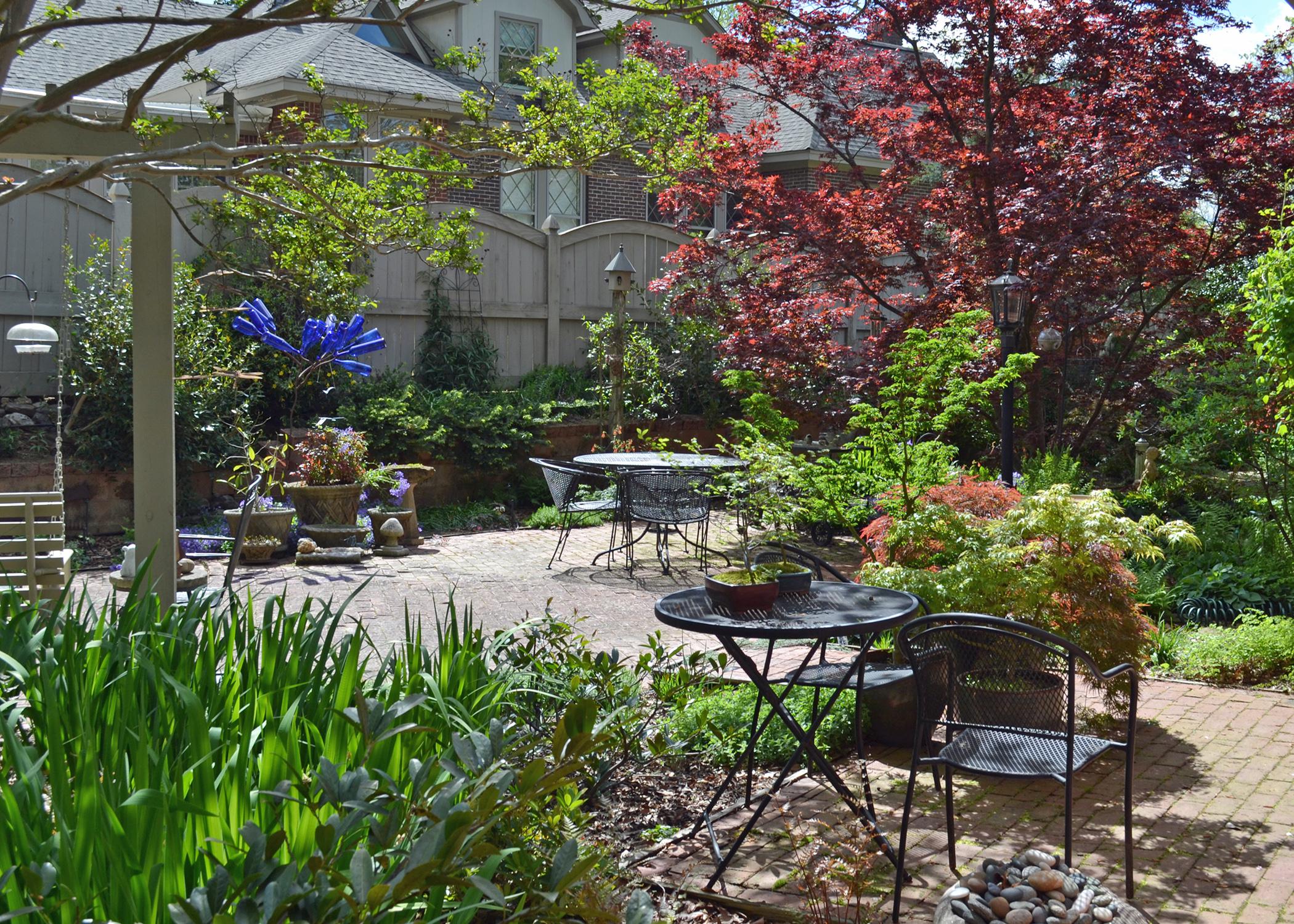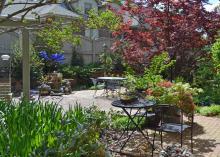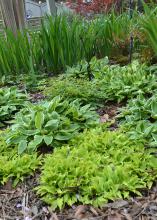Beautiful backyard gardens are possible with planning
Last week, I told you about the spring-blooming native plants I saw during a recent visit to the backyard gardens of Sarah Young in Tupelo. The benefits of this garden filled with native and non-native plants extends beyond the beauty of the plants themselves.
Gardening is a form of physical activity. Digging, planting, weeding and harvesting can contribute to improved flexibility, strength and endurance. It is a great way to stay active without feeling like you’re exercising.
Spending time in a garden has proven mental health benefits. The act of tending to plants, being surrounded by greenery and connecting with nature can reduce stress, anxiety and depression. It’s a therapeutic escape from the demands of daily life.
Backyard gardens contribute to a healthier environment. They provide habitat for beneficial insects and birds, promote biodiversity and absorb carbon dioxide from the air.
Gardens often bring people together. Whether it’s swapping seeds and gardening tips with neighbors, participating in a community project, or simply sharing the bounty of your harvest, gardens have a way of creating connections.
There’s also the visual appeal. A well-maintained garden adds beauty and charm to your home, creating a peaceful retreat for relaxation and entertainment. And a thoughtfully landscaped garden can increase property value.
Sarah’s backyard garden makes use of Japanese maples. These small to medium-sized deciduous trees or shrubs are prized for their aesthetic appeal and ability to thrive in a wide range of growing conditions.
Their delicate foliage comes in a wide range of colors, including green, red, purple and variegated. The leaves of Japanese maples are typically deeply lobed and finely serrated, and they often turn brilliant shades of red, orange and yellow in the fall.
Sarah has many different varieties of hostas throughout her garden. These are popular plants grown for their attractive foliage and shade tolerance.
Hostas typically have large, broad leaves that may be solid green, blue-green, yellow or variegated, and they may have smooth, wavy or ruffled edges. The plants produce white, lavender or purple flower spikes in the summer, but the foliage is the main attraction.
Hostas are easy to grow and require little maintenance. They are commonly used as ground cover, in borders or as accents in shady garden areas.
One of my favorite plants in Sarah’s garden is the coral honeysuckle vine. This species is native to the southeastern U.S. and is grown for its fragrant flowers, which bloom in spring and summer.
The flowers are trumpet-shaped, with a bright coral-red color that fades to pink as they age. They are typically arranged in clusters at the ends of the vine’s branches. Leaves are glossy evergreen, making coral honeysuckle vine attractive even when it’s not in bloom.
The vine grows quickly, and is often used to cover walls, trellises or fences, and it can also be grown as a ground cover. The coral honeysuckle vine is easy to grow and requires little maintenance. It is also known to attract hummingbirds and butterflies.






